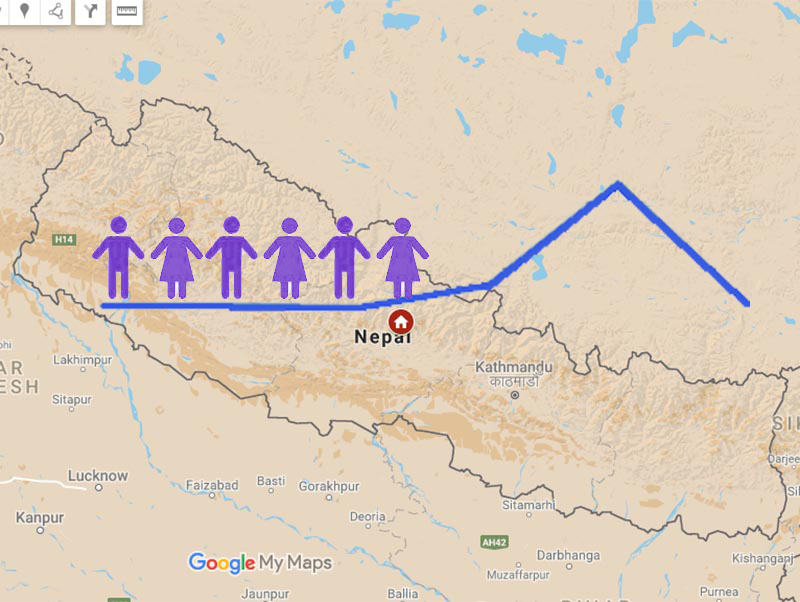Falling fertility rate to lower Nepal’s population
- Country’s population is projected to decline after 2053, standing at 27.3 million by the end of the century
Kathmandu, June 19
Nepal’s population is expected to virtually stop growing by the mid of this century due to falling fertility rates whereas the life expectancy will witness a steady rise, according to a new data released by the United Nations.
“Nepal’s population of 28.6 million in 2019 will increase to 36.45 million in 2053,” the World Population Prospects released recently by the UN’s Department of Economic and Social Affairs, Population Division, said. The population is projected to decline after 2053 while the country will just have 27.3 million people by the end of this century, the projections added.
From 1950 to 2011, the country witnessed the population growth between 0.06 to 2.6 percent each year while the growth trend, as per the data, had stopped for the next three succeeding years. The data shows that Nepal’s population in 2011 was 27 million while it had declined to 26.9 million till 2014. “Nepal, with 27 million inhabitants again in 2015, witnessed a continuous annual population growth till today,” the report said, adding that the growth trend would continue till 2053. By 2100, Nepal’s population is projected to reach approximately 27.3 million while the total fertility rate is expected to be 1.6 live births per woman, down from 1.9 today, according to the UN.
Nepal, which has more than 2.8 million births in the period 2015-2020, will record just 1.68 million births in the period 2050-2055, while the number of births is projected to shrink to 855,702 between 2095-2100.
Nepal must prepare to adapt to the consequences of an ageing population, suggests the report, mentioning that the average lifespan of a Nepali is now 70.31 years, 68.83 for a male and 71.72 for a female. But the life expectancy for Nepali citizens is expected to reach 83.66 years, 69 for a male and 84.62 for a female by 2100. “In 1950-1955, an average Nepali lived to be 34.46 years,” according to the report.
In Nepal, the number of infant deaths per 1,000 live births in the period of 2015-2020 is 27,934 while the infant mortality rate will stand at 6,148 in 2095-2100, according to the report. “Number of deaths, both sexes combined, stands at 896,981 in 2015-2020, while the period of 2095-2100 is projected to record approximate 2,210,847 deaths,” the report stated. Average mean age of childbearing for Nepali females is now 25.24 years while it will increase to 31.02 years by 2100.
In some cases, the falling population size is reinforced by high rates of emigration, and migration flow has become a major cause of population change in certain regions, according to the UN. “Nepal, Bangladesh and the Philippines are seeing the largest migratory outflows resulting from the demand for migrant workers,” the report added.
Footnote: The population figure errors as seen in today's print have been corrected in the online version. Apologies to our readers for the inadvertent error.






